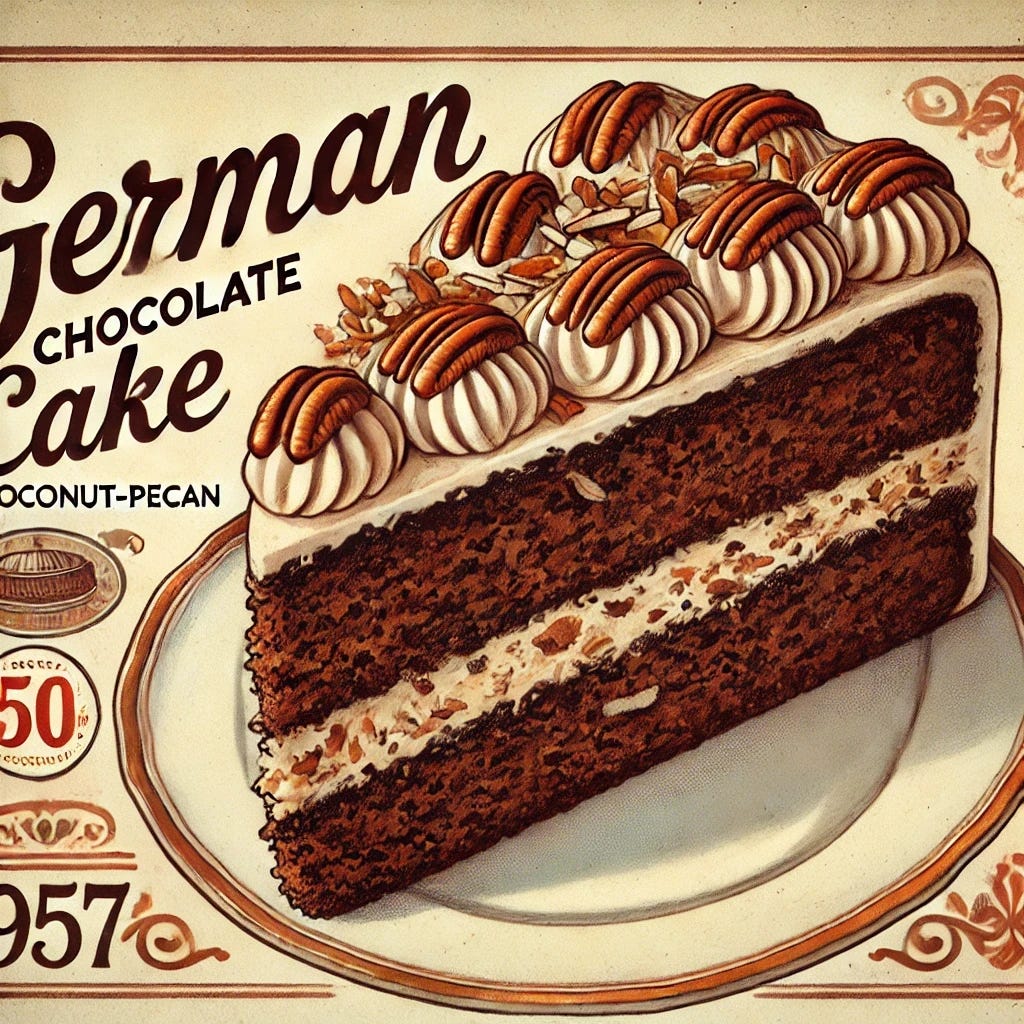During the American colonial period, baking was a very common activity. A typical home was likely to have a hearth in it—a fireplace built into the wall, where you could cook a variety of ways. One of these ways was to use a Dutch oven—a well built, self-contained cooking unit that distributed the heat of an open fire evenly.
If you were wealthy, you might have a separate oven, often called a beehive oven due to its distinct dome shape. After the Revolution, stoves started to pop up in the newly formed US states.
There was a company that formed very early on called the Baker’s Chocolate Company. It was formed in 1764, and it’s still around today, but owned by the Kraft-Heinz Company.
Baker’s Chocolate seems like the perfect name! It really implies what you’ll be doing with the chocolate they sell, doesn’t it?
Only no, it doesn’t. Baker’s Chocolate company actually didn’t start out by selling bakers’ chocolate at all, but instead chocolate for drinking, which was a lot more common and popular back then.
If you think that’s a weird name choice, you’re not wrong to raise an eyebrow, but it might clarify things if I told you that the two founders of the chocolate company were named John Hannon and James Baker. It might make even more sense if I then explained that Hannon went on a trip to the West Indes in order to procure some cacao beans, but never came back, and that Baker then ran the company from that point forward.
So yeah, Baker’s Chocolate isn’t chocolate for bakers, although our story will now turn to an American baker in 1852, working for Baker’s Chocolate Company. This particular fellow liked to experiment with the existing recipes for baking, and in doing so, he came across an entirely new type of baking chocolate.
It was less bitter and sweeter than the typical baking chocolate at the time, using less chocolate liquor than the usual recipes called for. This was really convenient for bakers at home, since they didn’t need to add additional sweeteners to the chocolate. Baker’s Chocolate Company finally had some great chocolate for baking.
Fast forward once again, this time to 1957. The Dallas Morning News ran a “Recipe of the Day” section, where they included a recipe for chocolate cake using this particular baking chocolate, developed by Baker’s a century earlier.
The recipe was for something called German chocolate cake. The inquisitive mind will turn to two potential outcomes here, and immediately start to decide which of the two is more likely: was the person who came up with the chocolate of German heritage, or was the person who came up with the recipe for the cake German?
I feel like when I say “neither”, you’re not even going to be surprised at this point. And, you’re right: Ruth Clay’s recipe actually called for German’s chocolate, not German chocolate. That’s because the type of baking chocolate Ruth wanted to use was named after its creator, Samuel German.
Samuel was that baker in 1852 who toyed with the recipe and came up with a sweeter form of chocolate, so bakers like Ruth didn’t have to take extra steps and assemble more ingredients.
Back in the 1850s when Baker’s introduced German’s Sweet Chocolate, it wasn’t an overnight success, but the idea of saving a few steps was very appealing, and over time, German’s Sweet Chocolate became a baking staple for a lot of folks in the US.
Ruth Clay’s recipe called for a distinct coconut-pecan frosting, which is really what’s notable and iconic about German Chocolate cake today.
And, while German chocolate cake is chocolate all right, it’s definitely not German, and Baker’s Chocolate wasn’t a company made to sell chocolate to bakers (at least at first).
If you’ve enjoyed learning about bakers and Bakers today, you might enjoy some dessert, like this more comprehensive Ode to Chocolate I had the opportunity to work on with true chocolate lover and expert
, and my most frequent co-author :






I see you ran with the idea! I love this story about German Chocolate Cake.
"...chocolate for drinking..." Specifically, I'm assuming, hot chocolate at one end, and drinks like Yoo Hoo at the other.